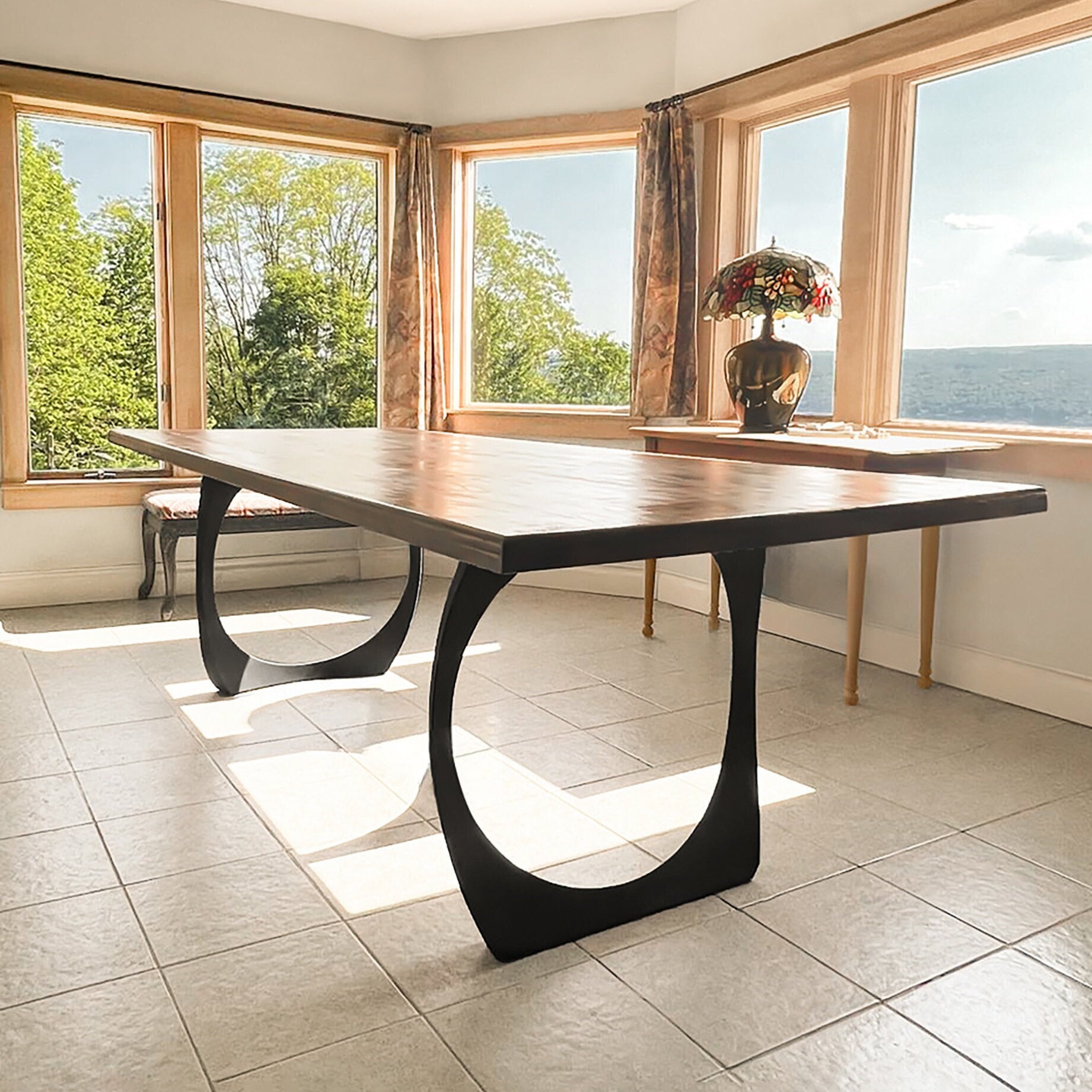Leading Trends in Dining Room Table Legs to Elevate Your Eating Area
Leading Trends in Dining Room Table Legs to Elevate Your Eating Area
Blog Article
A Detailed Check Out Table Leg Styles: Discovering the Perfect Suit
Choosing the right dining table leg design is important for both visual allure and sensible capability. For those with bigger tables, trestle legs ensure strong support, whereas barrette legs introduce a mid-century modern vibe with their minimalist layout. The x-shaped legs blend modern design with boosted security.
Typical 4 Legs
Amongst the different kinds of eating table leg styles, the typical four-leg layout remains an ageless option for several houses. 4 legs supply well balanced support, ensuring the table remains secure and capable of birthing significant weight (dining room table legs).
From a visual viewpoint, the conventional four-leg style can be conveniently adapted to various indoor designs. Whether crafted from timber, metal, or a mix of materials, these legs can be intricately sculpted, streamlined and minimalistic, or anything in between. Their flexibility permits them to complement both rustic and contemporary settings seamlessly.
Moreover, the straightforward framework of the four-leg design assists in convenience of motion and placement within a room. Unlike more complex bases, this design reduces blockages, offering sufficient legroom for diners. In summary, the traditional four-leg dining table leg design weds sustaining beauty with useful capability, making it a sharp option for those seeking both form and function in their eating furniture.
Stand Base
Frequently commemorated for its classy and space-efficient layout, the pedestal base is a notable option to the traditional four-leg setup in table leg designs. This distinct base typically includes a single main column sustaining the tabletop, which can vary in kind, from ornately sculpted wood to streamlined, contemporary metal. One of the main advantages of the stand base is its capacity to make the most of legroom and seating versatility. Without corner legs, restaurants are paid for greater freedom of activity, making it a perfect choice for round and oblong tables that advertise more intimate and comprehensive events.
The central column itself supplies a canvas for intricate layouts and artistic expressions, including a component of aesthetic interest below the table. In summary, the stand base combines performance with design, making it an improved and sensible choice for varied eating environments.
Trestle Legs
Trestle legs provide a robust and classic structure for eating tables, identified by their horizontal cross-bracing and tough support beams. Stemming from medieval times, this style has evolved yet kept its necessary structure, making it a perennial fave in both typical and modern setups. The central trestle light beam, typically supported by two or even more vertical blog posts, uses phenomenal security, enabling bigger table lengths without the need for extra legs.
A significant benefit of trestle leg tables is the sufficient legroom they provide. Unlike tables with 4 corner legs, the lack of blockages at the table's edges provides unimpeded area for chairs and diners, improving comfort and availability. This makes trestle tables perfect for fitting bigger gatherings, whether in a dining area or a banquet hall.
From rustic farmhouse to smooth modern-day styles, trestle legs can be tailored to fit specific preferences. Their long-lasting appeal and practical benefits make trestle legs a compelling choice for those seeking both design and usefulness in their dining table.
Barrette Legs

The charm of barrette legs hinges on their simpleness and versatility - dining room table legs. Offered in an array of materials, including steel and brass, they can be completed in browse around this web-site various shades to match various indoor styles. Whether matched with a rustic wood tabletop or a contemporary glass surface area, hairpin legs effortlessly mix functionality with a touch of vintage charm
Sturdiness is another notable feature of barrette legs. Despite their delicate appearance, these legs are crafted to bear substantial weight, guaranteeing the eating table remains secure and protected. Additionally, they are relatively easy to mount, making them a preferred more information option for do it yourself lovers and specialist furniture makers alike.
X-Shaped Legs

Created from materials such as steel, timber, or a combination of both, X-shaped legs can be customized to match various layout preferences. Steel legs often provide a streamlined and commercial feeling, perfect for loft-style houses and modern-day dining rooms. On the other hand, wood X-shaped legs provide a warmer, extra rustic appeal, ideal for farmhouse or eclectic interiors. The versatility in materials permits property owners to customize their eating tables to much better fit their total design scheme.
Moreover, the design behind X-shaped legs guarantees even weight distribution, decreasing the threat of wobbling and boosting toughness. This makes them particularly appropriate for larger dining tables that require extra support. Fundamentally, X-shaped legs mix useful design with modern visual appeals, making them a classic option for varied dining environments.
Final Thought
An extensive understanding of dining table leg styles exposes the distinct qualities and advantages of each layout. Trestle legs make certain robust support for larger tables, and hairpin legs introduce a mid-century modern-day visual.
Report this page